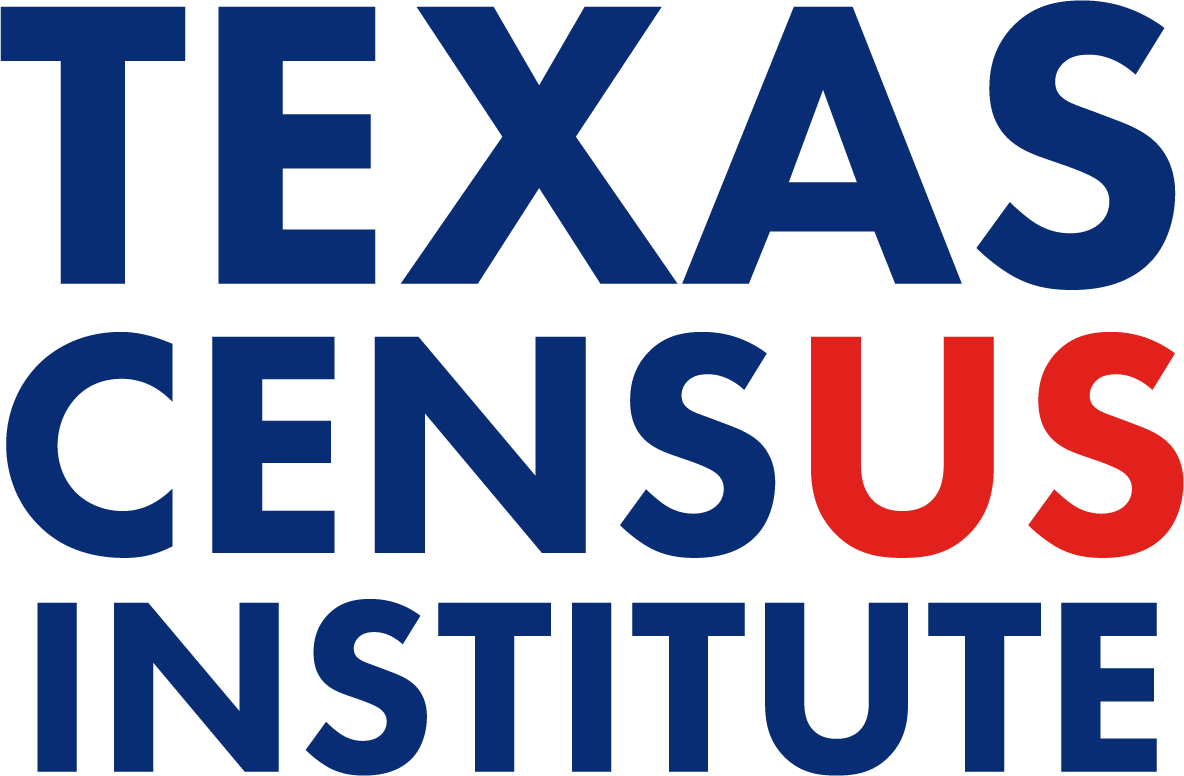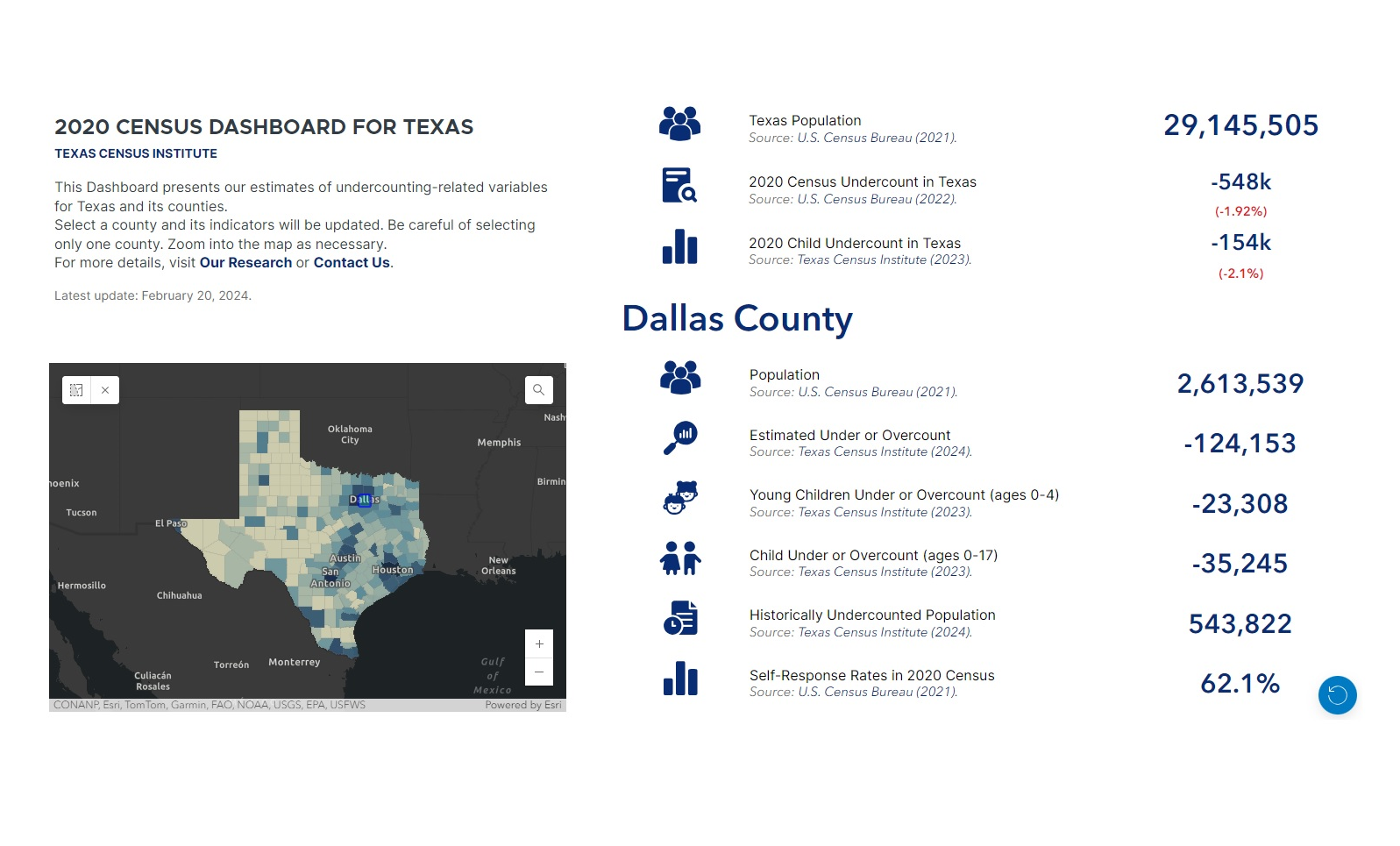RESEARCH BRIEF | Children | April 2024
CONTRIBUTING FACTORS OF THE 2020 U.S. CENSUS CHILDREN AND YOUNG CHILDREN UNDERCOUNT IN TEXAS
In partnership with Dr. Bill O’Hare from Count All Kids, this research report identifies the factors contributing to the 2020 Census undercount of Texas children and young children.
By: Dr. Francisco A. Castellanos-Sosa, Texas Census Institute, Senior Research Associate
Dr. William P. O’Hare, Count All Kids Campaign, Consultant
The Children’s Census Initiative
The Texas Census Institute created the Children’s Census Initiative to improve the accuracy with which the 2030 Census will count Texas children. The initiative comprises five related parts, each tackling a specific aspect of this phenomenon to enable a thorough analysis and informed decision-making. The first product of this initiative was a descriptive overview of net child undercount in Texas counties and regions. The second product of the initiative served as a detailed overview of the counties with the highest numbers and rates of net child undercount. This third product describes the young children’s net undercount in Texas counties and regions. This is the fourth product of the initiative. It studies the factors contributing to the undercount of Texas children and young children. The fifth product will measure the funding implications and its short-and long-term effects on relevant children and young children topics. This initiative will offer valuable insights and recommendations for addressing the U.S. Census child undercount and empowering stakeholders with the knowledge for effective decision-making and action.
Research Overview
The 2020 Census showed the largest undercount rate ever for young children (5.4%) and a 2.1% undercount rate for all children. Previous research indicated Texas had a 7.9% undercount rate for young children and 2.1% for all children. This study uses correlation and regression analysis to examine factors influencing undercount rates across Texas counties. Results indicate four factors affecting undercount rates for children and young children, with two factors having the most significant impact (non-geocoded addresses and the proportion of SNAP-eligible people who are young children). Additionally, ten factors influence children’s undercount rates only, and fourteen factors affect young children’s rates only.

Main Findings
Pros
Cons
Author’s Message
The undercount of children and young children are complex issues and, therefore, are hard to solve. For instance, the undercount of young children has been worse decade by decade since 1980. This study presents a set of variables explaining the variation in children and young children undercounting across Texas counties. Our results could help identify counties more likely to experience undercounts in the 2030 Census if nothing is done to prevent it. On the other hand, our results are helpful to target outreach efforts and awareness campaigns. On-the-ground research should be conducted to expand the understanding of the presented findings.
Acknowledgements: The authors appreciate the insightful support provided by Angela Broyles, Helen You, and Lloyd Potter in the development of this study.
FAQ
1) Why does the U.S. Census Bureau not publish undercounting and overcounting estimates at the county level for children?
As it is well known, the U.S. Census Bureau assesses the quality (undercounting or overcounting) of its Decennial Census using the Post-Enumeration Survey (PES) and the Demographic Analysis (DA).
The PES was implemented in 2020 by characteristics of the housing units only to the national and state levels. The PES uses the location of the housing units to obtain results at the subnational level, but it does not consider demographic characteristics such as age or gender. Moreover, “…the sample size for the 2020 PES and the assumptions required to make unbiased sub-state estimates, the Census Bureau was unable to include county or place estimates in the 2020 PES reports, as well.” (U.S. Census Bureau, 2022).
On the other hand, the Demographic Analysis uses “…current and historical vital records, data on international migration, and Medicare records to produce national estimates of the population on April 1 by age, sex, the DA race categories, and Hispanic origin.” (U.S. Census Bureau, 2022). While the DA is rich in demographic characteristics, it cannot identify the current place of residence of the population since a great part of it is based on vital records. Therefore, due to its nature, the official undercounting or overcounting by demographic characteristics is estimated at the national level only.
Therefore, it is not possible to obtain an official undercounting and overcounting estimate at the county level for children.
2) Why are we using counties as geographies?
Counties are used here as the geographical level of study because they are political subdivisions small enough to capture within-state disparities, and large enough to group social representation.
3) How accurate or precise are our net child undercount estimates?
While there is no statistical measure of accuracy or precision for our estimates, our estimates of the undercount of young children are highly correlated with those recently released by the U.S. Census Bureau for 135 Texas counties. Our estimates have a correlation of 0.997 with those provided by the Bureau. However, we perform the analysis for all 254 Texas counties. So, we believe our net young children undercount estimates are highly accurate. Regarding the undercount of children (ages 0 to 17) there is no statistical measure of accuracy or precision, but they were built using a similar approach as that for our young children’s undercount estimates.








